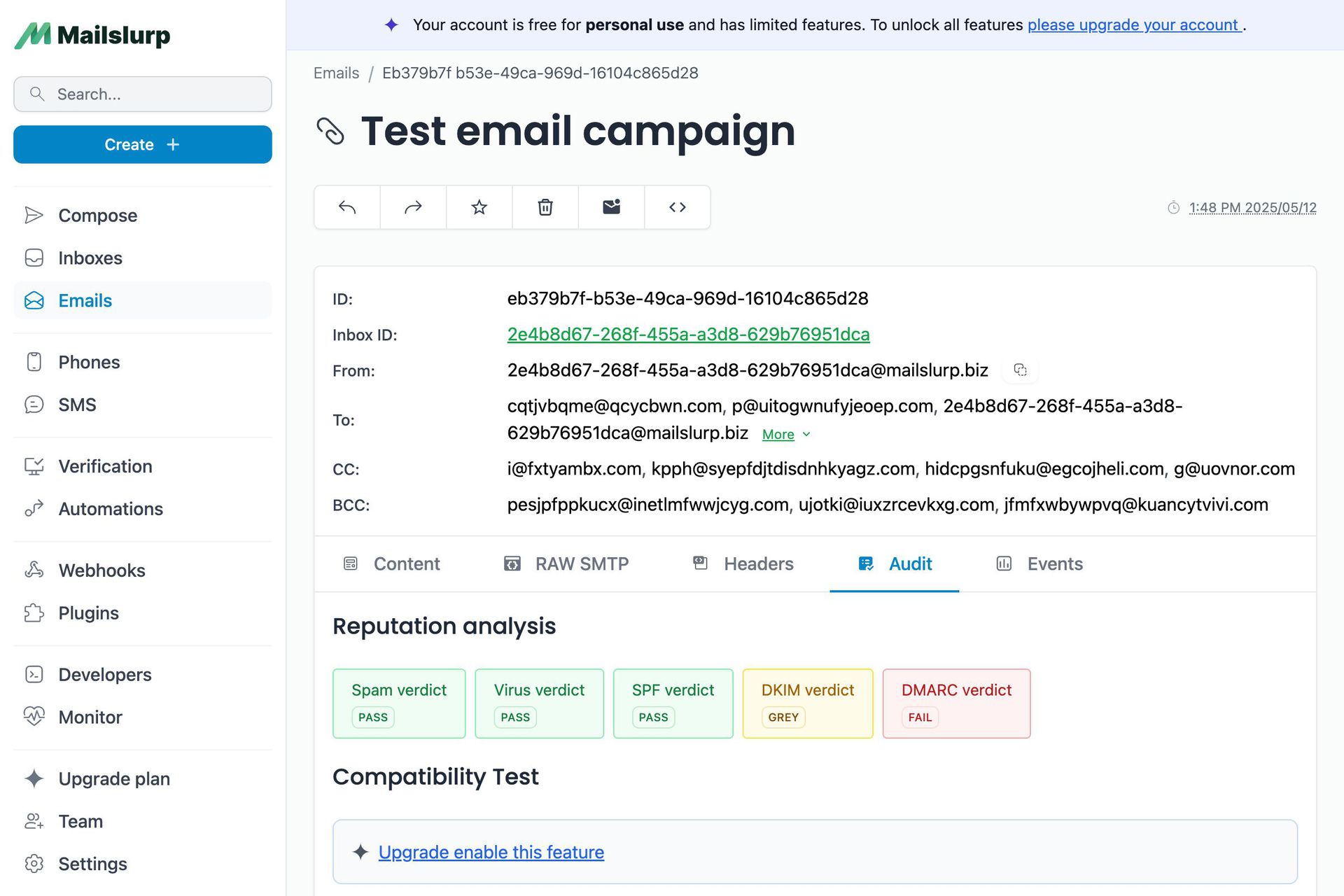Videos
Check out our tutorial video series.
Fetch and read emails with Graph-QL mail APIs. Control and inbox using MailSlurp and Graph query language instead of SMTP protocol.

MailSlurp offers powerful email inbox APIs over REST and GraphQL. The GraphQL API is accessible via at . Let's see how we can use GraphQL to create email addresses, send and even receive emails and attachments using GraphQL.
Note you must set an header in your GraphQL client and pass a valid MailSlurp API Key (which you can create for free here). The GraphQL endpoints cover most but not all MailSlurp functionality - for instance file upload/download is exclusive to the REST API and SDK clients.
You can call MailSlurp's GraphQL email API using any React/GraphQL client. This includes , etc. An easier way might be using the excellent open source library. First install the NPM dependencies
Next we need to create a client that sets the header using to the value of your MailSlurp account API KEY.
If you want to enable auto-complete in , VSCode, IntelliJ, or another editor create a file in the root of your project and include this endpoint:
You can make queries like so. Note that the example method call should use backticks to use template string invocation. They are shown below as double quotes because of formatting issues. Note you can use raw strings without gql too if you prefer.
The great thing about graphql is that you can explore the MailSlurp API schema yourself using the provided GraphQL Playground
Check out our tutorial video series.
Email and SMS guides for automation and testing.
View github project code for multiple languages.
Latest posts from the MailSlurp team.
Test, build, and automate messaging with a free MailSlurp account.
